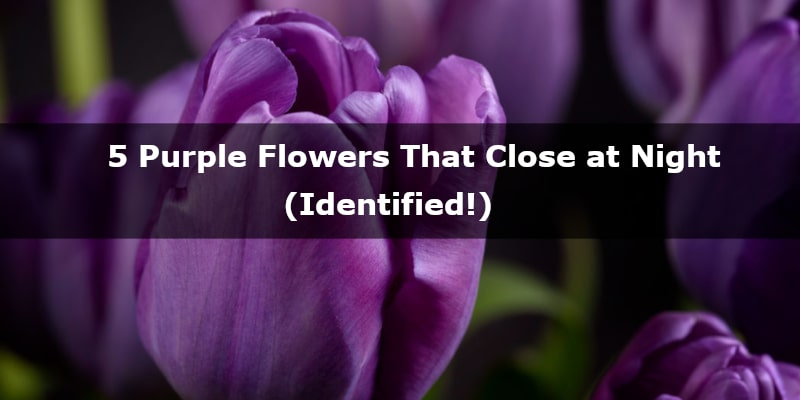So, you’ve noticed a purple flower that closes at night, and you want to identify it?
In this article, you will find the most common purple flowers closing at night, and learn more about them
Why Do Some Flowers Close at Night?
Most flowers don’t close at night, but some do. They do it, because of their evolution. Flowers close at night to achieve the best conditions for development and reproduction.
Closing at night by flowers is called nyctinasty. It is a movement of a plant controlled by a biological clock, with light not only acting on the ion absorbing mechanisms, but also by resetting the clock.
According to scientists, flowers that close at night, prevent pollen from becoming wet and heavy with dew. When pollen is wet, a plant loses its viability. Another function of sleeping flowers is protection from freezing.
There is also a theory that sleeping flowers conserve energy for the daytime when pollinating insects are most active. Moreover, closing at night protects the pollen from unwanted pests.
Now take a look at the purple flowers that close at night.
Tradescantia Occidentalis (Prairie Spiderwort)
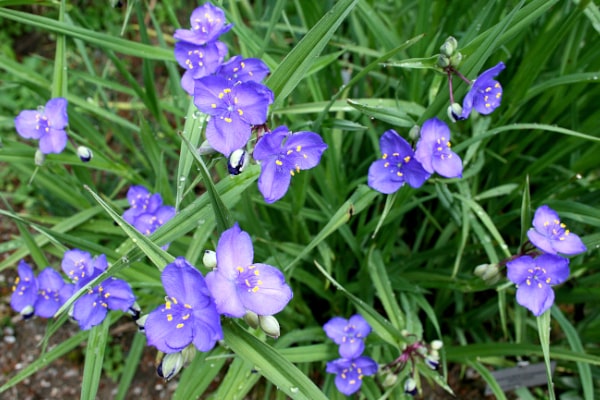
Commonly known as Spiderwort. It’s a clump-froming herbaceous with long, narrow leaves, up to 6 inches (15 cm) long. The foliage is topped by small clusters, blue-violet flowers with yellow stamens.
The plant contains many flowers, but each of them lasts only one day. The plant can grow up to 12-24 inches (30-60 cm). Spiderwort is able to self-sow, and become invasive.
It grows in moist, well-drained soil, no matter if it’s sun or shade. If it grows in shade, it might contain fewer flowers.
Morning Glory (Ipomoea Purpurea)
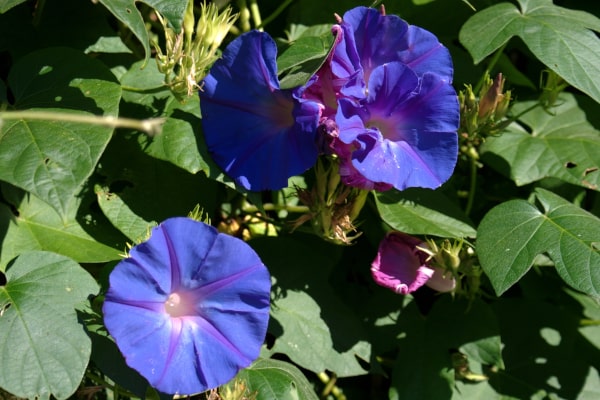
Morning glory is an exotic climber, annual vine, known for its heart-shaped foliage, and purple-blue trumpet-shaped flowers. The flowers are 2-3 inches (5-7 cm), and close in the afternoon.
It produces new flowers daily and blooms from early summer to early fall. It’s growing really quickly. Furthermore, it’s 6-10 ft (180-300 cm) tall, and 3-6 ft wide (90-180 cm).
Morning glory self-seeds easily, but it’s not invasive. It thrives in full sun, evenly moist, well-drained soil. Its seeds are highly toxic when ingested. When handling, use gloves.
Spring Beauty (Claytonia Virginica)
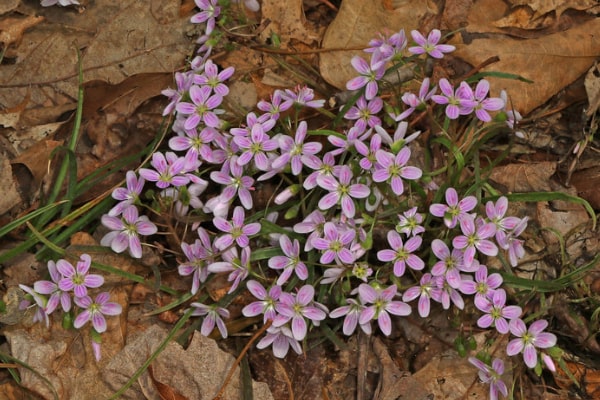
Spring Beauty is a perennial with loose clusters of small, star-shaped white, pale-pink, or pale purple flowers. It’s blooming in early to late spring. Blossoms are borne atop this stems with grass-like green leaves.
The flower smells great in spring. The smell disappears in late spring. In large numbers, it forms a groundcover. Spring Beauty grows up to 6-10 in. (15-25 cm) tall and wide.
It can self-seed in fertile, moist, well-drained soil, but it tolerates even dry soils.
Purple Winecup (Callirhoe Involucrata)
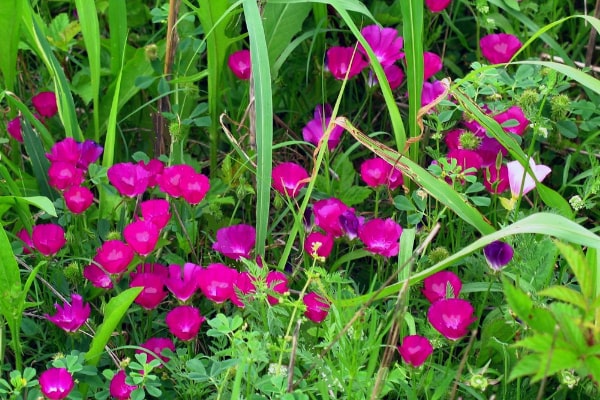
Its name Winecup comes from flowers that resemble wine cups. It blossoms in late spring and early summer. Purple flowers open in the morning and close in the evening. They can be up to 2,5 in. (6 cm) wide.
Flowers consist of 5 petals with a white spot at their base. It’s common in mild climates. Winecup grows in low foliage mounds up to 6-12 in. (15-30 cm) tall.
Purple Winecup thrives in full sun, dry to medium, well-drained soil. It might rust if conditions are too wet. It has a high tolerance to drought. Attracts butterflies.
In satisfactory conditions, Winecup can self-seed.
California Poppy (Eschscholzia Californica)
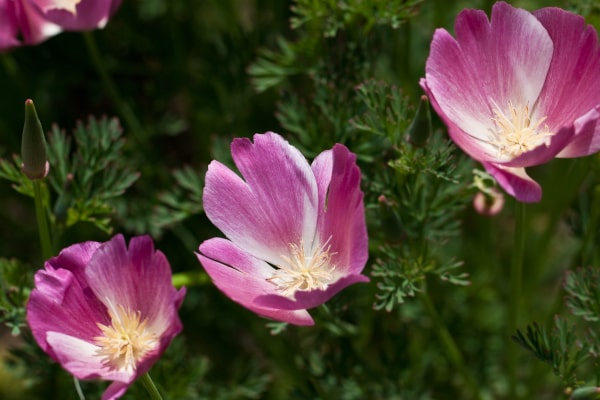
California Poppy is usually orange, but it has a cultivar called Purple Gleam. It blooms quickly and is easy to grow. Flowers blossom for weeks from spring to mid-fall or fall through winter in mild climate areas.
It grows in loose, free-branching mounds up to 6-12 in. (15-30 cm) tall, and 6-8 in. (15-20 cm) wide. California Poppy features single, semi-double silky flowers, up to 3 in. (7 cm) across).
The flower closes not only at night, but also when it’s overcast, and when it rains. Good drainage is important, and it thrives in such conditions as full sun, sandy, poor to average soil. Highly heat and drought-tolerant.
This flower might self-seed, but it’s not invasive.

